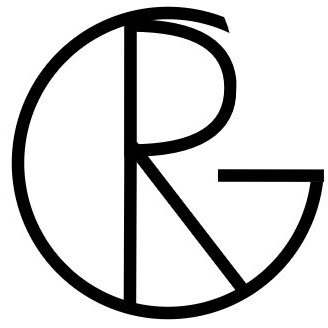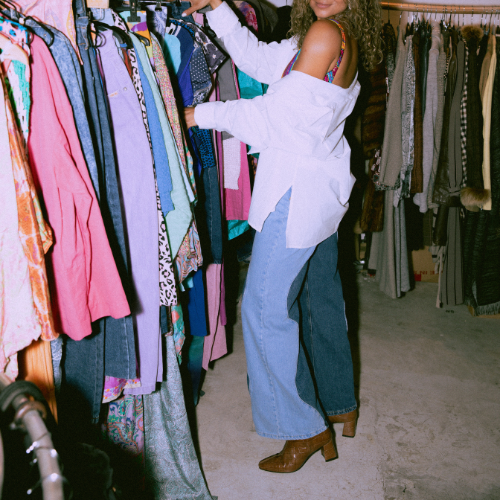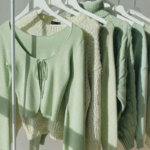Sustainable fashion is becoming more popular over the years. We’ve just realized that we shouldn’t buy every cute item we see. However, when we do shop when it is necessary it is difficult to know what we should look for since there are so many different things we have to take into account. In order to help you a bit, I have created a list with 5 different tips for a sustainable and ethical wardrobe.
1. Sustainable fabrics
The first thing that you should look for when creating a green and sustainable wardrobe is the fabrics of your clothes. Here is a list of some of the most sustainable fabrics in clothing:
-
Hemp
Hemp is an absolutely amazing material. It is a very cheap option compared to the other materials, and instead of harming the environment, it improves the environment where the plant grows. It is not environmental specific, meaning that it can grow in many different climates all over the world. The plant also does not need fertilizers or pesticides. Hemp cleans the air around us by absorbing carbon dioxide, making it the ultimate material for sustainable fashion! Besides all these amazing benefits, hemp also makes a very comfortable and breathable material.
- Organic/ recycled cotton
Cotton is the most used fabric in clothing because it is a light and breathable material. However, the production of conventional cotton is terrible for the environment, and it uses tremendous amounts of water. Besides a lot of chemicals and fertilizers are used.
This is why organic and recycled cotton is a better choices. Organic cotton does not use chemicals and often also no fertilizers. It minimizes the environmental impact of cotton. Recycled cotton, however, is an even more sustainable fabric. Since the material already exists it does not need any resources to be created. It keeps organic clothing out of landfills and gives the material a second life.
-
Linen
Together with hemp, linen is a very versatile crop: it needs little water, fertilizers, and pesticides. Like hemp, it can be grown in many different climates all over the world. The whole plant is used when making clothing and it is completely biodegradable.
-
Recycled nylon (Econyl)
Nylon itself is a horrible product from the environment. It is made from oil and is plastic fiber. It can be very useful for certain fashion items. This is where recycled nylon comes in. Recycled nylon comes from plastic bottles, industrial plastics, and fishing nets for example. By using this material waste in the environment is reduced. Recycled nylon works just as well as regular nylon, but forms a closed loop which has a positive effect on our environment.
-
Bamboo/Tencel/Lyocell
These are all tree-based materials. It is sourced from the pulp of trees and is chemically processed until it becomes a soft and usable material. As you can see these are all plant-based materials. Compared to cotton these materials require less water and energy to produce. These fabrics can also be recycled. However, since they still require chemicals and energy it is not the most sustainable materials, and some are worse than others.
-
Avoid
There are certain items that you can best avoid if you want to create a sustainable wardrobe. In order to help you a little bit I’ve created a list with materials to avoid:
- Polyester
- Nylon
- Acrylics
- Inorganic cotton
- Rayon
2. Zero Waste Design
We all know that the fashion industry creates millions of pounds of waste each year. From leftover fabric to threads to plastics. Many of this could be used elsewhere or recycled. This is where zero-waste design comes in. This design technique forces designers to challenge their techniques, and find other ways of creating clothes. There are two different kinds of zero-waste design.
The first is cutting the fabric in a way that leaves no scraps and uses 100 percent of the materials. Normally around 15 percent of the material would be wasted when cutting the fabrics, so it is no surprise that this zero waste manner of cutting has a positive effect on the environment.
Another strategy for zero-waste design is upcycling. Upcycling is using old materials, or clothing items to create new items. Upcycling gives a second life to materials, unique for each designer. It is up to the designer to create new beautiful pieces with them, either one-of-a-kind or reproducible products.
3. Locally made clothing
Distributing, and transporting the clothing items from the factory to your closet is where one-third of the pollution from the fashion industry comes from. Therefore, the biggest benefit of buying locally made clothing is the enormous reduction in greenhouse gas emissions.
Often brands are most likely to choose factories in other countries, so they have few restrictions in regards to the environment, and workers. However, when a brand produces clothing locally we are able to hold the brands responsible if they are harming the environment, or mistreating their employees.
A less sustainable, but more economical reason why you should support local brands is that by buying locally made clothing you support your own economy.
Nevertheless, you should be aware that even though the clothes are locally made the rest of the supply chain might not be local. Besides, the materials that they use are not necessarily therefore you should do your research before randomly buying a whole new closet from a local brand.
4. Recycle
An important aspect to consider when changing your wardrobe is recycling. If there are certain items that you want to get rid of, sell them, give them away, or use them for something else. This way you make sure that less clothing will end up in landfills. Another way you can recycle is by buying second-hand clothing yourself. Do you have a certain item in mind? Take a look at depop or go to a thrift shop nearby. Chances are you can find the item there, or find a similar item.
5. Eco-friendly dyes
An important aspect of sustainable fashion is whether a brand uses eco-friendly dyes or not. Many artificial dyes are made with chemicals and are therefore incredibly bad for the planet. When these chemicals spill into the environment it can lead to a decrease in biodiversity, and the health of people in the surrounding areas.
This is why it is important to see which dyes a brand uses in its clothing. If you want a harmless, non-toxic dye you need to know whether they are Oeko-Tex® certified or not. This certification lets you know whether a product is environmentally and ethically produced.
A note for you:
Realize that there is only so much you can do. Not everyone has millions to spend on clothing, shoes, and accessories and sometimes we just want a certain item from Zara. That’s okay. Even when we try our hardest the fashion industry cannot be 100 percent sustainable.




